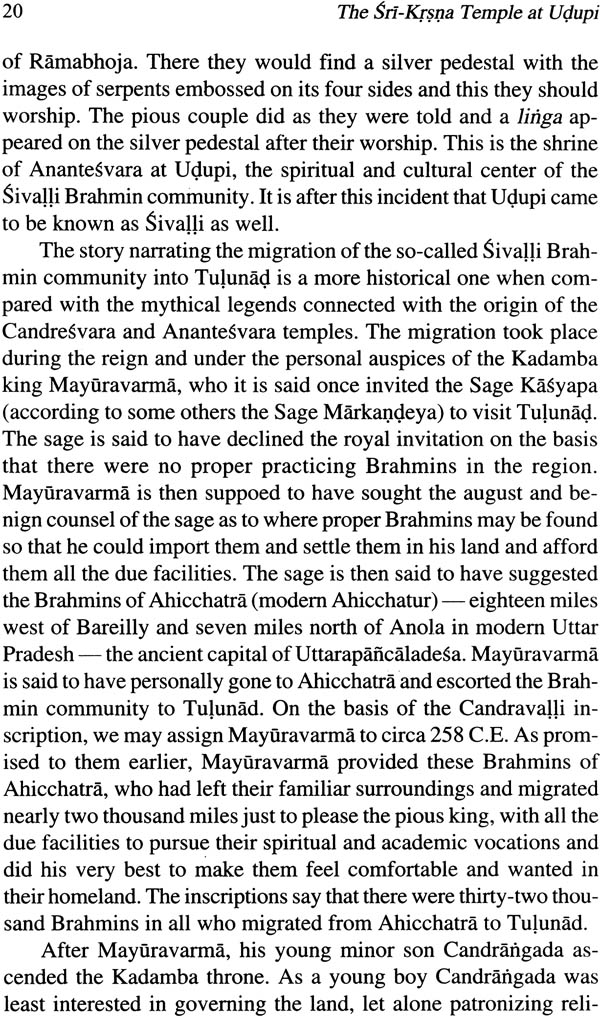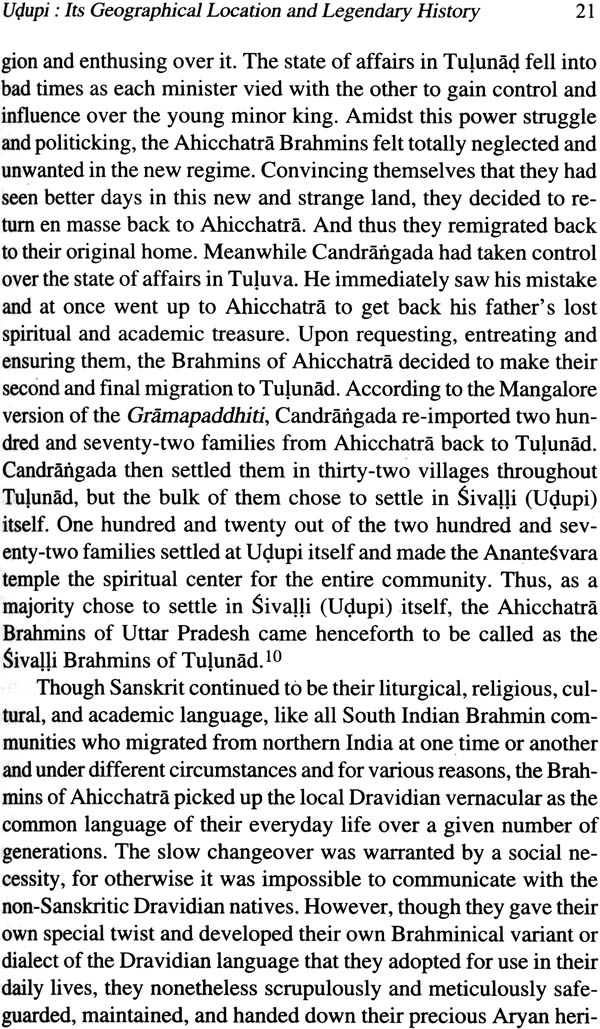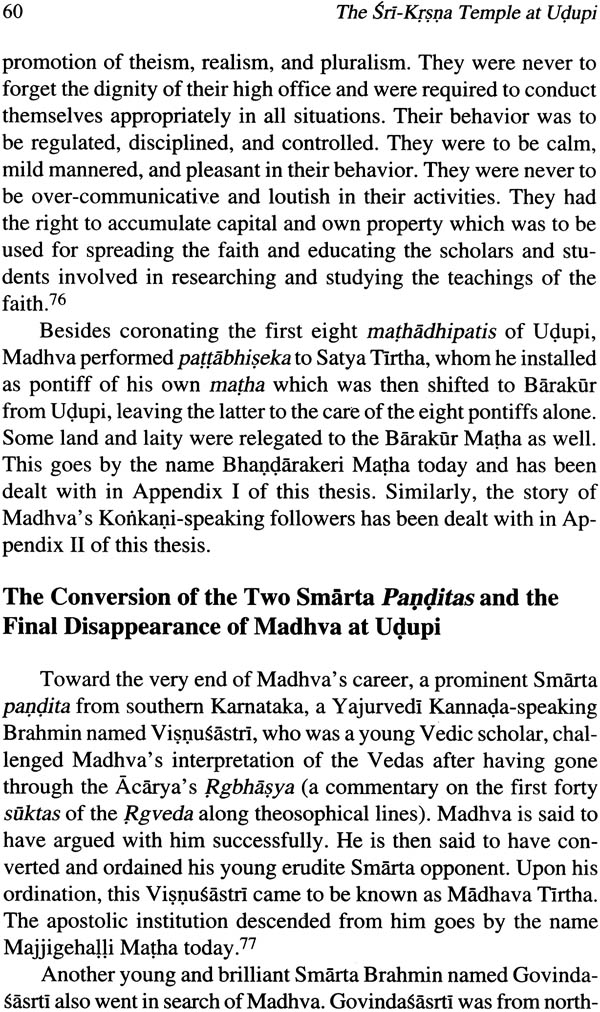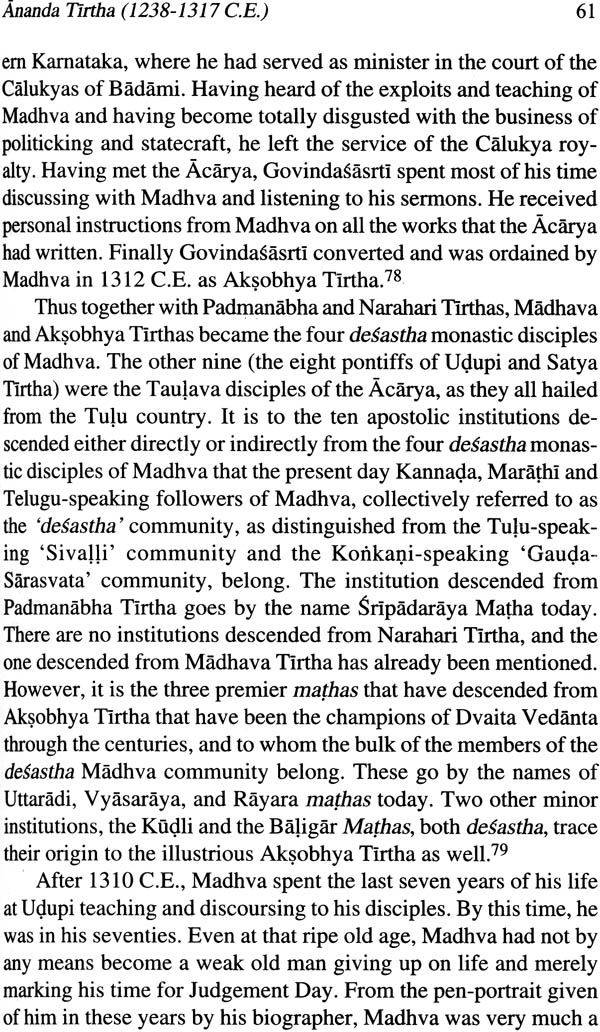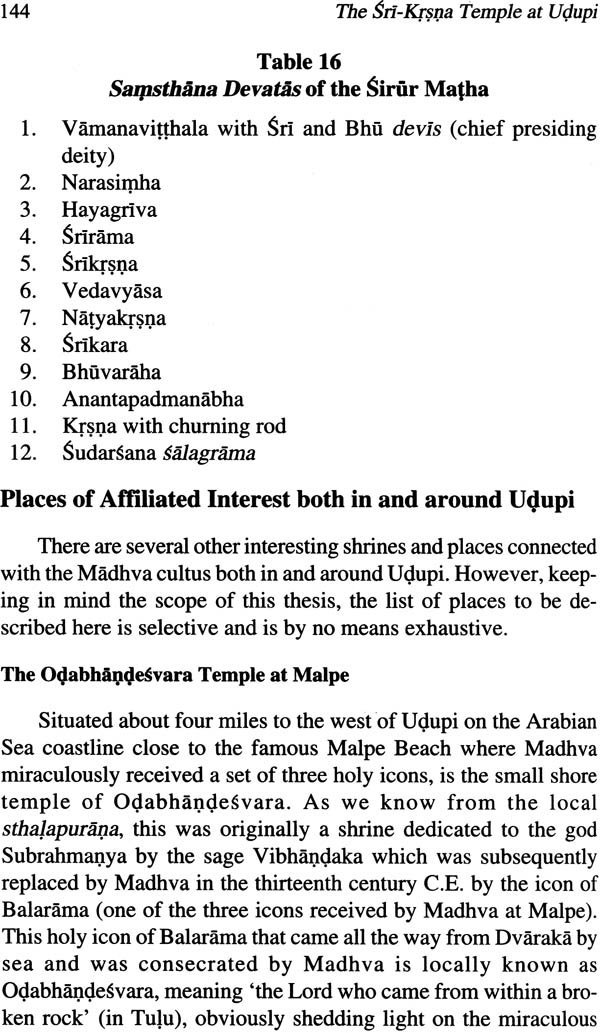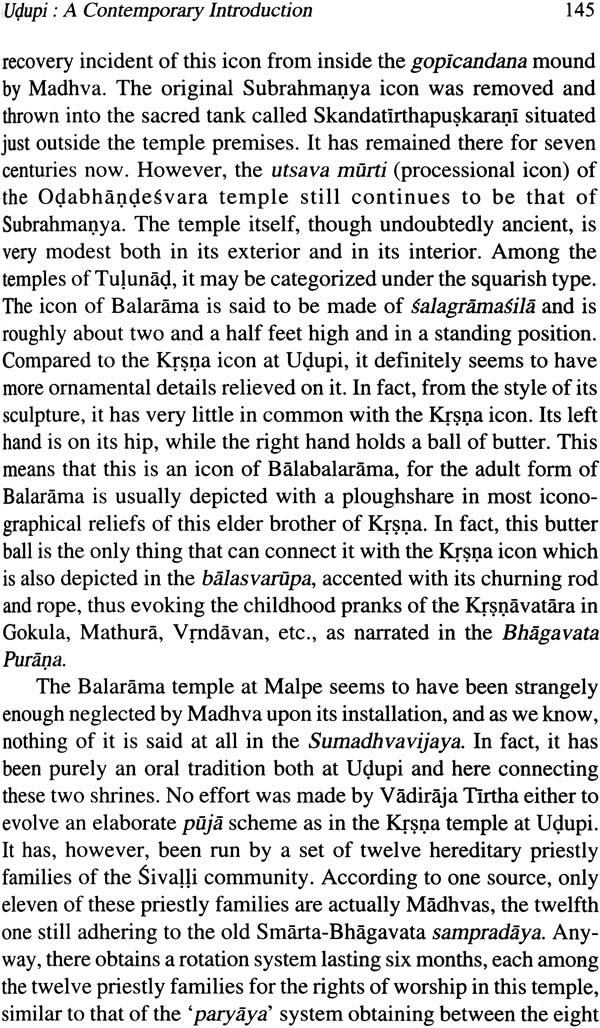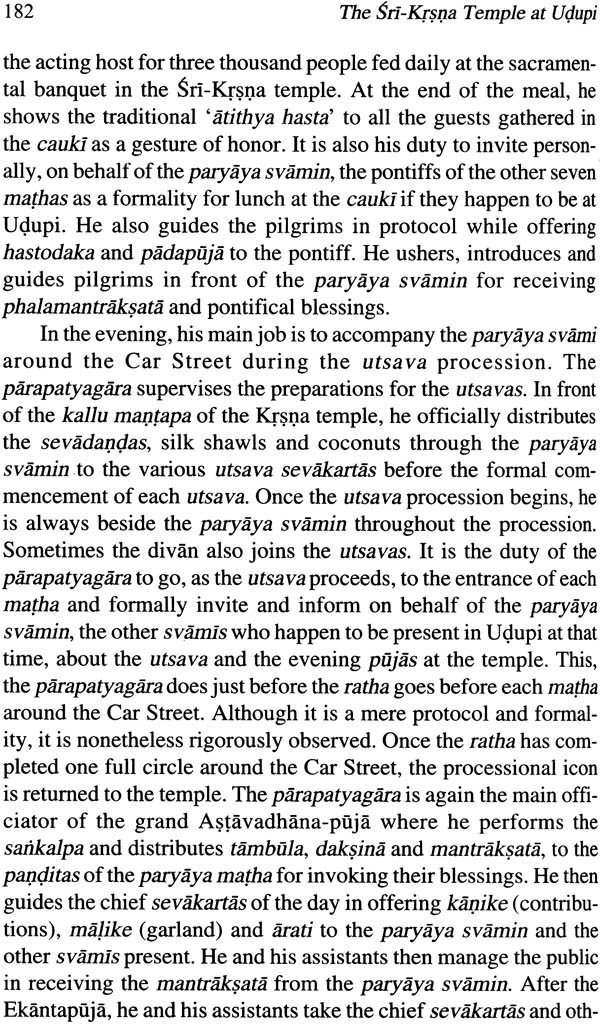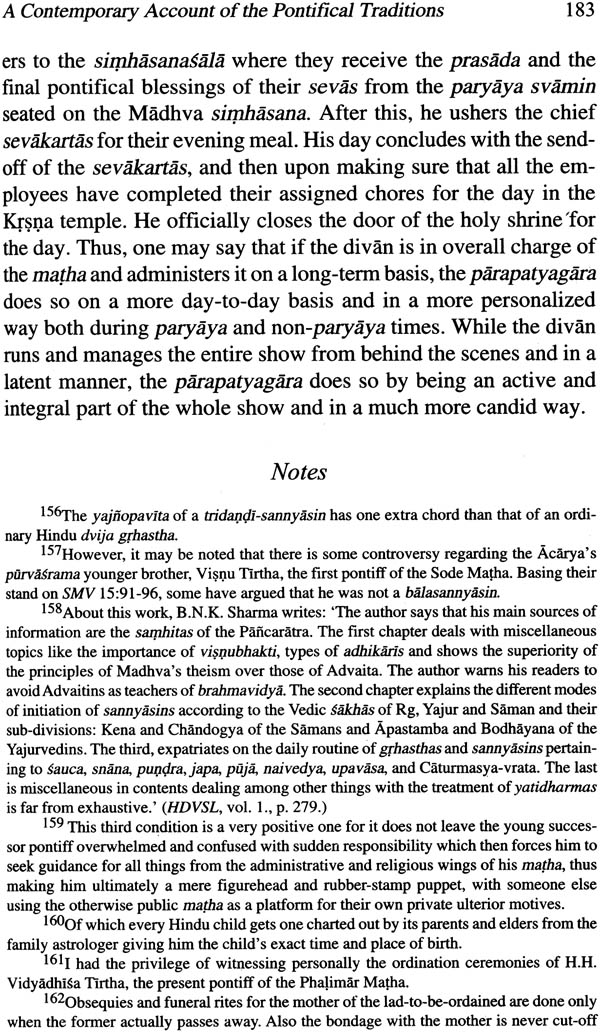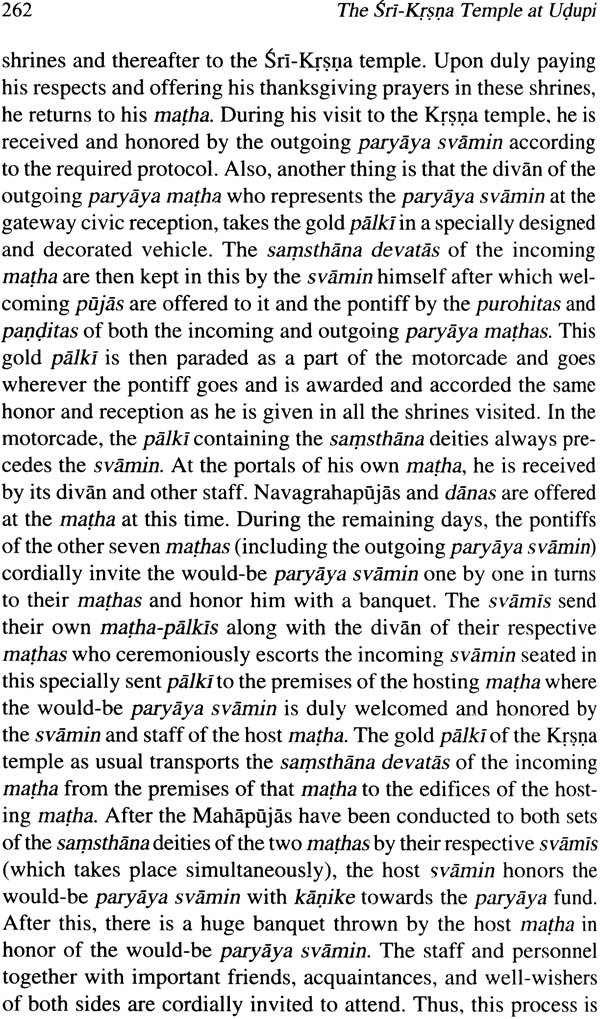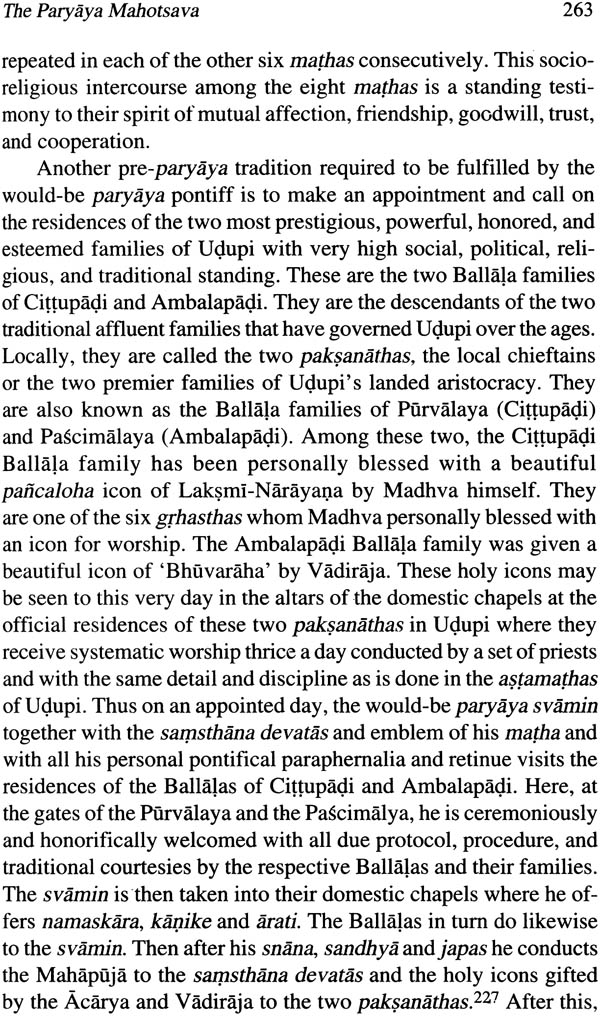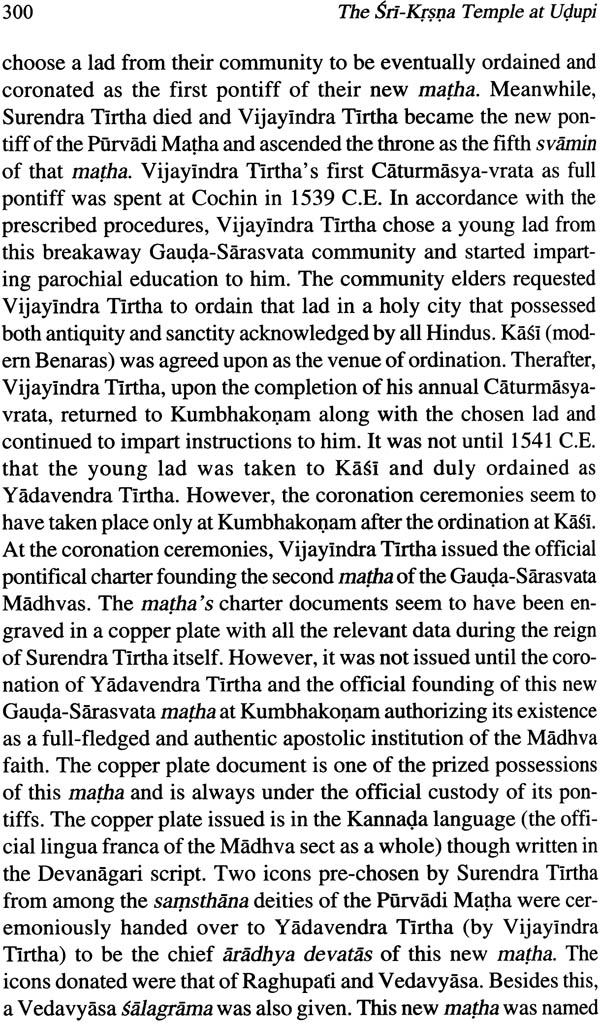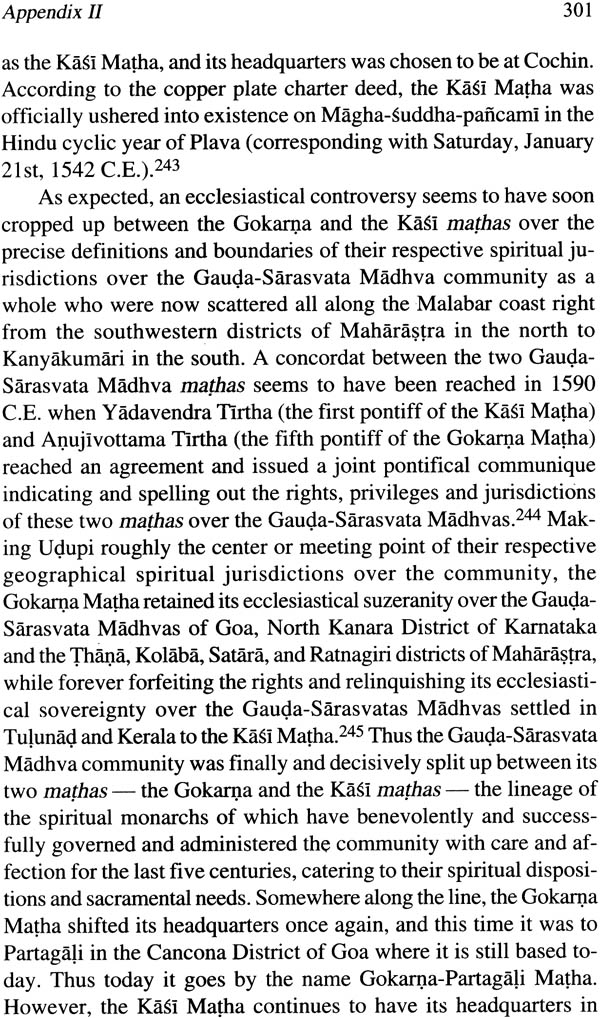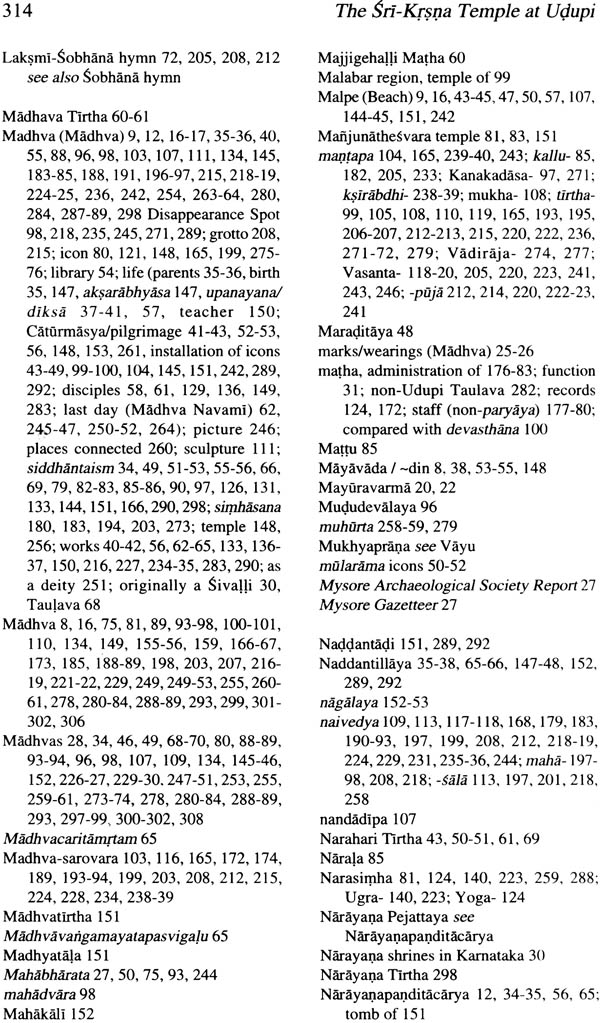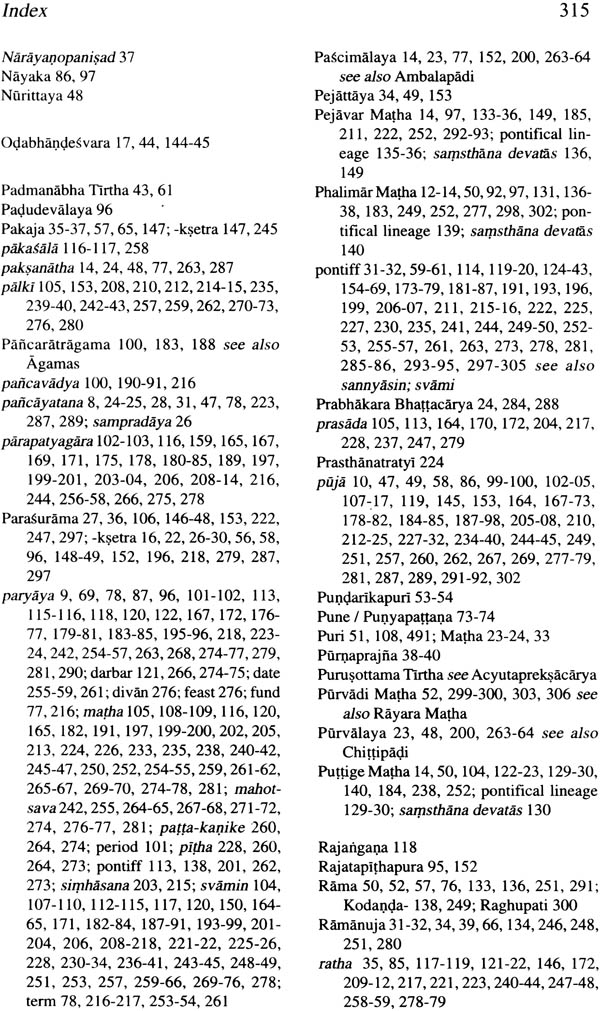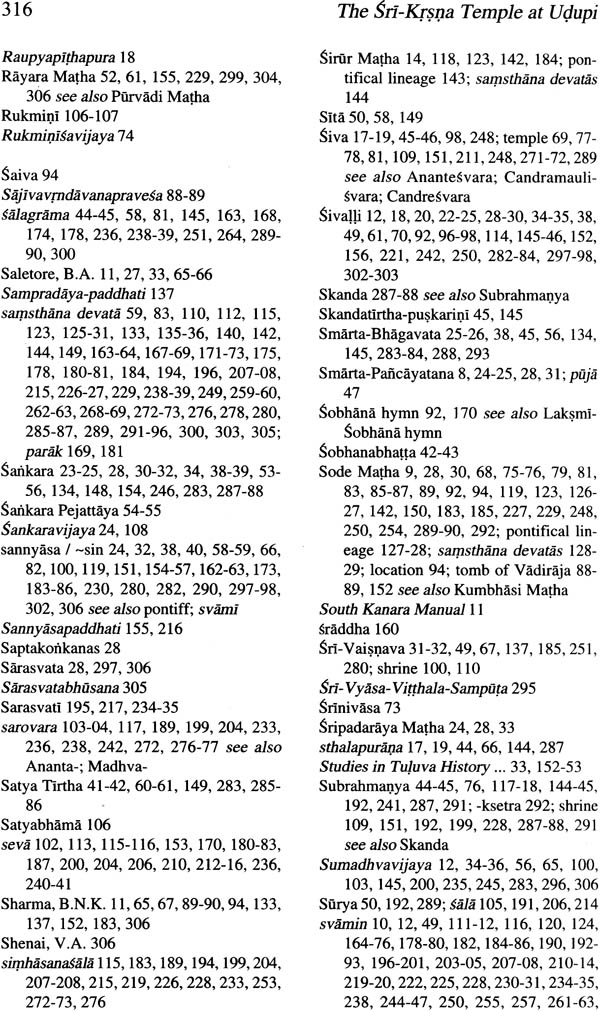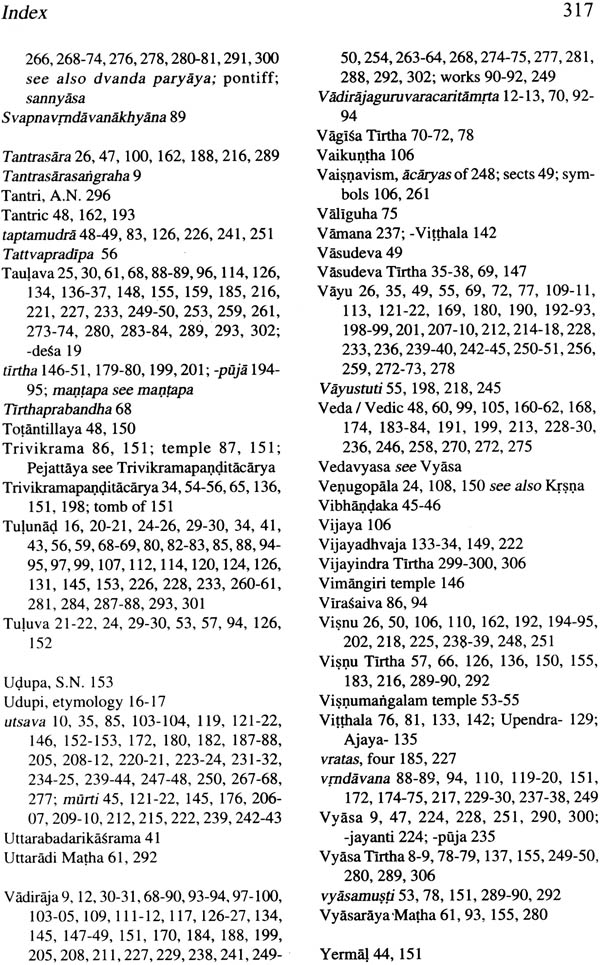
The Sri Krsna Temple at Udupi (The Historical and Spiritual Center of The Madhvite Sect of Hinduism)
Book Specification
| Item Code: | NAE981 |
| Author: | B. N. Hebber |
| Publisher: | Bharatiya Granth Niketan |
| Language: | English |
| Edition: | 2005 |
| ISBN: | 9788189211042 |
| Pages: | 337 ( 39 B/W Illustrations) |
| Cover: | Hardcover |
| Other Details | 9.0 inch X 6.0 inch |
| Weight | 580 gm |
Book Description
The book covers in eight chapters the traditions of one of the most unique Hindu temples and pilgrimage centers of southern India, i.e., the Krsna Temple at Udupi. The first chapter gives the legendary history of the Udupi region. Consecrated by Madhva [1238-1317 CE] whose biography is covered in the second chapter, and enhanced by Vadiraja Tirtha [1480-1600 CE] whose life and works are detailed in the third chapter, this book gives in chapters four, five and six a contemporary description of this unique temple of Krsna which is administered by a set of eight Madhvite abbots by a system of rotation lasting 2 years each. Chapter seven narrates the method of observance of the annual routine of the Hindu festivals at the Udupi temple. The last chapter narrates the details of the biennial transfer-of-power of the custody of the Udupi temple from one monastery to the next. The two appendices at the end of the book expound the histories of some of the other Madhvite monasteries outside of the Eight Monasteries [Asthamathas] framework located in and around the Udupi general region.
B.N. Hebbar completed his sastraic education in India and studied in the USA. He has a doctorate in Indology from the University of Utrecht, Netherlands, He is academic advisor to the Washington DC area International Buddhist Committee and teaches at the universities of the area.
1. Sri-vaisnava Sampradaya
Founder: Ramanuja
School of philosophy: Visistadvaita Vedanta
The states in which its followers are found: Tamil Nadu Andhra Pradesh and Karnataka
2. Brahma Vaisnava Sampradaya
Founder: Madhva
School of philosophy: Dvaita Vedanta
The states in which its follower are found: Karnatka Maharashtra Andhra Pradesh and Tamil Nadu.
3. Sankadi Vaisnava Sampradaya
Founder: Nimbarka
School of philosophy: Dvaitadvaita Vedanta
The state in which its followers are found: Uttar Pradesh, Bihar and Bengal
4. Rudra Vaisnava Sampradaya
Founder: Vallaba
School of philosophy: Suddhadvaita Vedanta
The state in which its followers are found: Rajasthan, Gujarat and Uttar Pradesh
5. Gaudiya Vaisnava Sampradaya
Founder: caitanya
School of philosophy: Acintyabhedabheda Vedanta
The state in which is followers are found: Bengal and Orissa
All of them are theistic and realistic reaction to the absolutistic idealism of sankara advaita Vedanta and his all encompassing smarta Pancayatana sampraday. The first two are south indian and follow the aisvarya bhakti marga (Master servant relationship between the Lord and his devotee) while the latter three are north Indian and adhere to the madhurya bhakti marga (Lover-beloved relationship between the lord and his devotee) also while the Lakshmi Narayana concept predominates south Indian vaisnavism the radha krsna element pervades the three North Indian Vaisnava sects. Furthermore the south Indian vaisnavas are sects. Furthermore the south Indian vaisnavas are relatively more intellectualized then their northern Indian counterparts. This is especially true of Madhva sect which had had a very strong scholastic tradition ever since the time of its inception. In fact it has been the pontiffs and panditas of the Madhva sect who have been the doyens of the anti Mayavada campaign sect who have been the doyens of the anti Mayavada compaign this fact would become clear if one were to take a panoramic and synchronistic view of the history of the anti advaita movement as a whole. To wit the Nayamrta of Vyas Tirtha almost shattered the position of Advaita in the field of indian thought until it was resalvaged and presented anew in the Adaitasiddhi of Madhusudana sarasvati.
However it must be equally pointed out that Dasgupta says:
Apart from their solid intellectual tradition the Madhvas ecclesiastically are the most well organized and cohesive group among all the sect of the Hindu faith. Every Madhava family belong to a particular matha (diocese) to which it has been owing a traditional allegiance. The madhvas are extremely strict and orthodox in their adherence to an observation of Hindu traditional and practices when compared with other sets of that faith. The Madhva rituals of worship adopted from an allegedly ancient manual the Tantrasarasangraha said to have been authored by sage Vyasa are unique to the sect and are spectacular opulent and splendid in their style and method.
Ananda tirtha (alias Madhvacarya was the founder of sect. in Madhva consecrated a beautiful and unique image of Balakrsna made of salagrama stone which he is said to have obtained by miraculous means at malpe beach three miles west of Udupi the town in which he finally installed the sacred icon. Toward the latter end of his career Madhva chose eight of his most favorite monastic disciples and relegated them with the responsibility of continuing the worship of the holy icon by turns lasting two monts each, he thus made them the joint custodians of the Udupi Krsna temple which eventually become the spiritual rallying center of his sect. Madhva is alos to have paired off his eight selected bishops into four sets. The paired off partners in each set were required to assist each other in times of crises. This is the dvanda system.
In the 16th century Vadiraja Tirtha the 20th pontiff of the sode Matha instituted several reforms at Udupi chief of whom was the extension of the two month period of custodianship of the temple to two years each thus making the change of office biennial instead of once in two months. This is the famous paryaya system as it obtains to this day among the astamathas of Udupi. Vadiraja is also said to have standardized and systematized the daily annual biennial routines of worship and administration at the sacred shrine.
| Prolog | 7 | |
| 1 | Udupi:Its Geographical Location and Legendary History | 16 |
| 2 | Ananada Tirtha (1238-1317 C.E.) | 34 |
| 3 | Vadiraja Tirtha(1480-1600 C.E.) A Biographical Reconstruction | 68 |
| 4 | Udupi: A Contemporary Introduction to the Great Historical and Spiritual Capiital of the Madhva Vaisnava Sampradaya | 95 |
| 5 | A Contemporary Account of the Pontifical Traditions of the Udupi Mathas and Their Religio-administrative Apparatus As It Exists | 154 |
| 6 | A Contemporary Account of the Daily Routine of the Sri Krsna | 187 |
| 7 | Annual Festivals Observed at Udupi | 221 |
| 8 | The Paryaya Mahotsava: The Biennial Festive Event Unique to Udupi | 253 |
| Appendix 1 | ||
| A Brief Sketch of the Four Non-Udupi Taulava Madhva Mathas | 282 | |
| Appendix II | ||
| A Brief Sketch of the two Gauda-Sarasvata Madhava Maths | 287 | |
| Select Bibliography | 307 | |
| Maps | 308 | |
| Index | 311 | |
| Illustrations | 318 |
